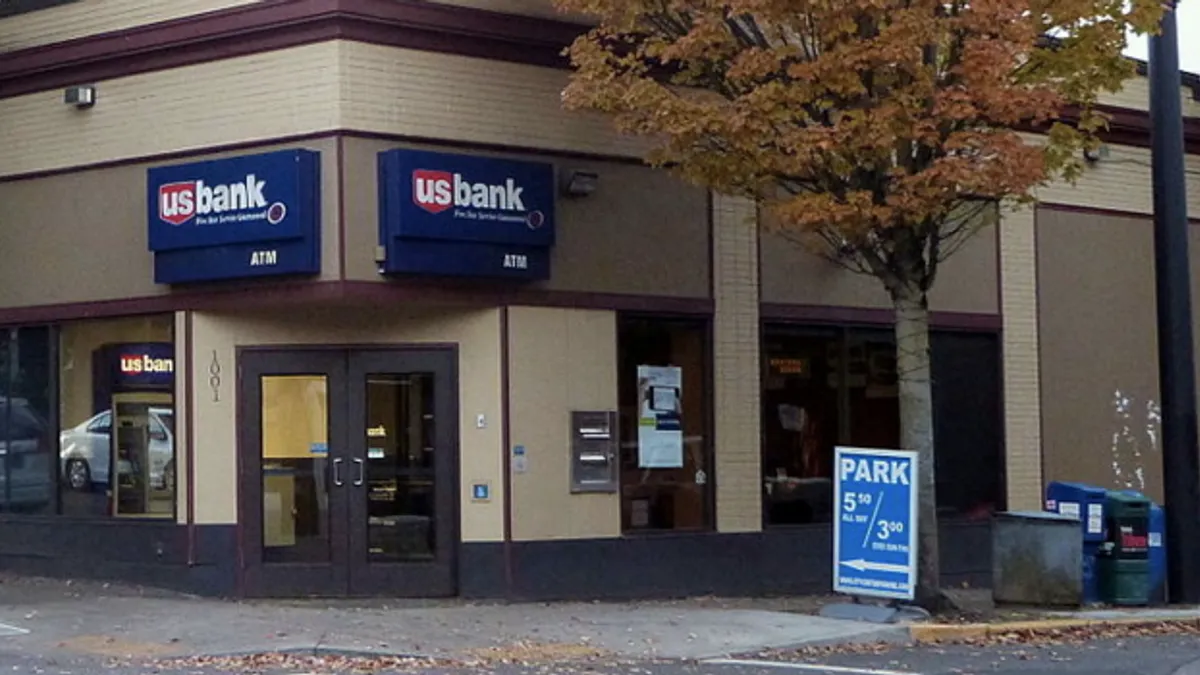Dive Brief:
- U.S. Bank eliminated certain fees for non-sufficient funds (NSF), as of Jan. 3, the company said Wednesday in a release detailing its fourth-quarter earnings. The bank also plans, by June, to increase — to $50 from $5 — the amount an account can be overdrawn before a fee is charged.
- Truist announced Tuesday that it would unveil two new personal checking accounts without overdraft fees this summer. The bank said it also plans to discontinue returned-item, negative account balance and overdraft protection transfer fees for all existing personal accounts in the coming months.
- The moves by two of the three largest U.S. regional banks come roughly a week after Bank of America said it would reduce from $35 to $10 the amount it charges for overdraft fees, beginning in May. Wells Fargo, on the same day, said it would eliminate NSF and transfer fees for certain customers and provide a 24-hour grace period before charging overdraft fees.
Dive Insight:
The moves by Bank of America and Wells Fargo — and a commitment late last year by Capital One to eliminate overdraft fees — may have prompted Chris Britt, the CEO of the neobank Chime, to tell Bloomberg on Tuesday: “All of these are steps toward the inevitable, which is that, if not all, most of these fees will go away."
However, unlike Capital One which is doing away with overdraft fees altogether, recent developments at Bank of America and Wells Fargo — and now U.S. Bank and Truist — are “just sort of ... baby steps to get there.”
Truist said the changes it is rolling out will save clients roughly $300 million annually by 2024.
U.S. Bank told American Banker the shift away from overdraft and other fees will cost the bank between $160 million and $170 million in annual revenue.
Nevertheless, U.S. Bank CFO Terry Dolan said, “we believe this is not only the right thing to do for customers, but it is a smart business decision.”
The increase in the amount a U.S. Bank account can go negative before triggering an overdraft fee — from $5 to $50 — mirrors a change JPMorgan Chase announced last year. Additionally, U.S. Bank said it will introduce a 24-hour window for customers to deposit funds and avoid an overdraft charge — taking a page from the recently announced Wells Fargo policy, as well as "low cash mode," an offering PNC launched last year.
“For some time, we have been at the forefront of using digital technology to help our customers avoid overdraft charges and our efforts have helped our customers more easily and effectively manage their money, which has contributed to increase customer satisfaction," Dolan said. "This latest move is simply the next step in the process.”
U.S. Bank's new Overdraft Fee Forgiven offering gives account holders a full day to deposit funds to avoid a fee when the negative balance is more than $50. The bank said it will also roll out a new balance dashboard providing smart alerts to inform consumers of a potential negative balance before it occurs.
At Truist, the Truist One checking account the Charlotte, North Carolina-based lender plans to launch this summer will offer a $100 negative balance buffer for qualifying clients, a deposit-based line of credit up to $750 for all clients and premium rewards.
The bank said it will offer another, yet-unnamed alternative checking account with no overdraft fees this summer.
“We started this work several months ago by asking clients what they think," said Brant Standridge, Truist's chief retail community banking officer. "No overdraft fees is just one of the features. We're committed to providing clients more access to credit for situations when they need it, delivering rewards based on their relationship with the bank, and offering the opportunity to grow with us.”











